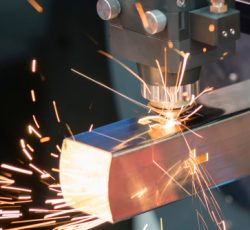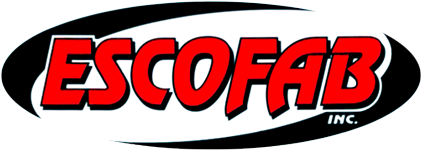 Metal fabrication is a process that involves shaping and manipulating metal to create various products and structures. From automobiles to household appliances, metal fabrication plays a crucial role in manufacturing diverse items. In this blog post, we will explore the different steps involved in metal fabrication and gain a better understanding of how this process works.
Metal fabrication is a process that involves shaping and manipulating metal to create various products and structures. From automobiles to household appliances, metal fabrication plays a crucial role in manufacturing diverse items. In this blog post, we will explore the different steps involved in metal fabrication and gain a better understanding of how this process works.
1. Design and Planning
Before any fabrication can begin, the first step involves designing and planning the project. This stage includes collaborating with engineers, designers, and clients to determine the specific requirements and desired outcome. Detailed blueprints and specifications are created, outlining the dimensions, materials, and overall design of the product.
2. Material Selection
Once the design is finalized, the next step is selecting the appropriate metal material for the fabrication process. Different metals are chosen depending on the specific application and desired characteristics of the final product. Common metals include stainless steel, aluminum, brass, and copper. Factors such as strength, durability, and corrosion resistance play a significant role in material selection.
3. Cutting and Shearing
After the material is selected, the metal sheets or plates are cut and sheared to the desired size and shape. This step can be accomplished using various methods such as shearing machines, plasma cutters, laser cutters, or water jet machines. Precision cutting ensures that the metal pieces are accurately shaped according to the design specifications.
4. Forming and Bending
Once the metal pieces are cut, they are often formed and bent to achieve the desired shape. This process can be accomplished using machines like press brakes, roll forming machines, or hydraulic bending machines. Heat may also be applied to make the metal more pliable and easier to manipulate during the bending process. Forming and bending require skilled technicians who can accurately shape the metal pieces according to the design requirements.
5. Welding and Joining
After the metal pieces are cut, formed, and bent, the next step is joining them together. Welding is the primary method used for joining metal components in fabrication. This process involves heating the metal surfaces to their melting point and adding a filler material to create a strong bond. Welding techniques vary depending on the type of metal and the desired joint strength. Some common welding techniques include MIG welding, TIG welding, and spot welding.
6. Machining and Finishing
Once the metal pieces are joined together, additional machining and finishing processes may be required. Machining involves using precision tools like lathes, mills, and drills to remove excess metal or create intricate details. Finishing techniques such as grinding, polishing, and sandblasting can be applied to improve the appearance and smoothness of the metal surface.
7. Quality Control and Inspection
Throughout the fabrication process, quality control and inspection are essential to ensure that the final product meets the required standards. Technicians and inspectors thoroughly examine the fabricated parts, checking for any defects, imperfections, or deviations from the design specifications. Any necessary adjustments or corrections are made to ensure the final product is of the highest quality.
8. Assembly and Testing
After all the individual metal components are fabricated and inspected, they are assembled to create the final product. This may involve attaching other materials, such as plastic, rubber, or electrical components, in addition to the metal parts. Once the assembly is complete, the final product undergoes rigorous testing to verify its functionality, durability, and compliance with safety standards.
Conclusion
Metal fabrication is a complex and intricate process that involves various steps to shape and manipulate metal into finished products. From design and material selection to cutting, forming, welding, and finishing, each stage requires expertise, precision, and quality control. Understanding the steps involved in metal fabrication helps us appreciate the craftsmanship and skills required to create the products we use daily.
Got Questions? Let Us Help!
Escofab Inc. has been dedicated to providing quality machining and fabrication since 1981! Here at Escofab Inc. we utilize fabricating and machining to your specifications. We work to fit your needs and ensure customer satisfaction. Our friendly and informative staff are eager to assist you! Give us a call or come on in today; walk-ins welcome!
